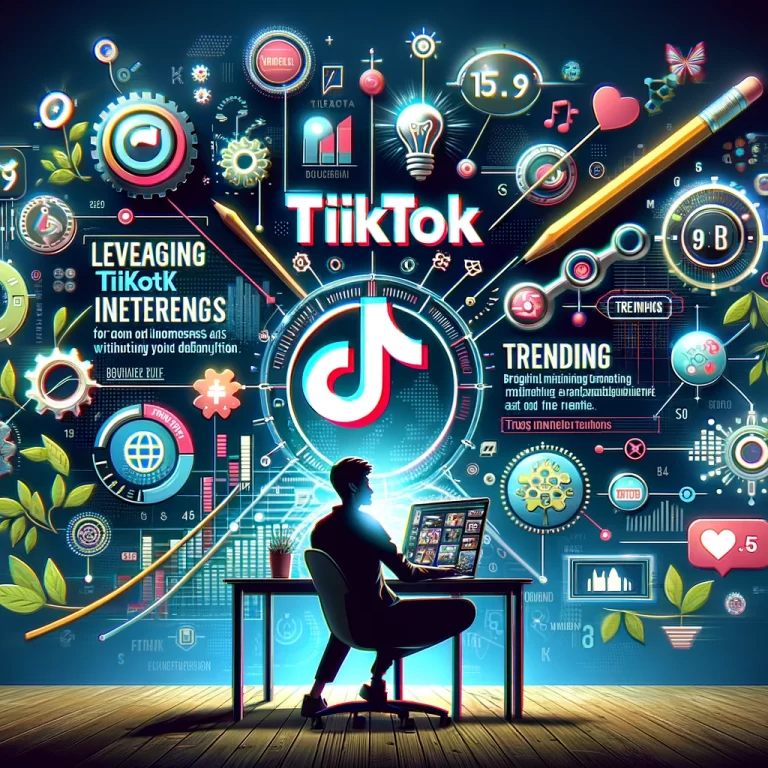Search Engine Optimization (SEO) has evolved dramatically over the past decade, but 2024 is poised to be a watershed moment for digital marketers, especially in the highly competitive U.S. market. The rapid advancements in technology, changing search behavior, and smarter algorithms mean that what worked last year may not be effective this year. The sheer pace of SEO‘s evolution makes it crucial for businesses to stay on top of trends, or risk falling behind in search rankings. In a space where every position on a search engine results page (SERP) counts, U.S. marketers must adopt new strategies to remain competitive.
In 2024, SEO is no longer just about keywords or backlinks; search engines are becoming more intelligent, leveraging artificial intelligence (AI), machine learning (ML), and enhanced user experiences to determine rankings. These innovations are reshaping the way businesses should think about optimizing their websites, content, and overall digital strategy. From AI-powered content optimization to the rise of voice search, these emerging trends are fundamentally altering how brands interact with consumers online.
Why It Matters in 2024
As search engines evolve, they are becoming more adept at understanding user intent, delivering increasingly accurate and personalized results. Google, for example, continues to refine its algorithms, moving beyond simple keyword matching to focus on user behavior, semantic search, and on-page experience. According to recent studies, over 50% of searches are now zero-click—meaning users find what they need directly in the SERP without visiting a website. This trend emphasizes the need for innovative SEO strategies to capture attention even when the competition for clicks is fierce.
For U.S. marketers, adapting to these innovations is not optional—it’s essential. Brands that fail to keep pace with new developments risk not only lower rankings but also reduced visibility, engagement, and ultimately revenue. In a market where online presence is the backbone of most marketing strategies, SEO innovations can be the difference between thriving or becoming irrelevant.
Purpose
This article will dive into the top 10 SEO innovations that are expected to dominate 2024 and beyond. By understanding and applying these innovations, U.S. businesses can stay ahead of the curve, ensuring their content ranks highly and continues to drive results. Whether it’s leveraging AI for content optimization or focusing on Core Web Vitals to enhance user experience, these trends are not just nice-to-have—they are the future of SEO. In this rapidly changing landscape, U.S. marketers need to be proactive, adopting these strategies to secure long-term success.
AI-Generated Content Optimization
Artificial intelligence (AI) has radically transformed the way digital marketers approach content creation, with AI-powered tools such as ChatGPT, Jasper, and Copy.ai leading the charge. In 2024, the application of AI in SEO is not limited to mere content generation but extends to content optimization, where AI learns from user intent, context, and search engine optimization patterns. This makes AI-generated content not just a novelty but a strategic tool that can significantly enhance digital marketing efforts.
Innovation in AI Content Creation
In the past, content creation was a labor-intensive process that required meticulous keyword research, manual optimization, and extensive writing. With AI tools like ChatGPT, that process has become streamlined. These tools can generate vast amounts of text within seconds, adapting to different tones, styles, and formats based on prompts.
However, in 2024, the innovation lies not just in creating content but also in optimizing it for SEO. AI can now analyze search trends, user behavior, and competitive data to fine-tune content that is highly relevant to the target audience. A study from MarketsandMarkets shows that the AI in marketing industry is expected to grow from \$10.1 billion in 2022 to \$37.5 billion by 2028, driven largely by its SEO applications. AI tools can analyze vast datasets, identify content gaps, and suggest improvements in real-time.
For example, instead of just generating an article with relevant keywords, AI can optimize it by ensuring it aligns with the search intent, incorporates long-tail keywords, and follows best practices for readability, meta tags, and internal linking. This level of granularity is essential in the U.S. market, where competition for top SERP positions is fierce.
Actionable Tips for U.S. Marketers
Use AI to Conduct Keyword Research: AI tools can quickly analyze search volume, competition, and related search queries to help you target the right keywords. By understanding user intent, AI can help you discover long-tail keywords and semantically related phrases that boost ranking potential.
Leverage AI for Content Personalization: AI’s ability to learn from data can enable marketers to create personalized content for different audience segments. This can lead to higher engagement and better SEO outcomes, as Google rewards content that matches user intent.
Optimize for User Experience: Use AI tools to analyze user behavior and adjust content accordingly. Whether it’s rewording paragraphs to improve readability or reorganizing information based on heat maps, AI can make real-time improvements that enhance user experience, which is crucial for SEO rankings.
AI-Assisted On-Page Optimization: Tools like Surfer SEO and Clearscope integrate AI with SEO practices to optimize on-page content, ensuring the use of appropriate headings, keyword density, meta descriptions, and image alt texts that are essential for ranking on Google.
Semantic Search and Contextual Understanding
Search engines, particularly Google, are no longer just matching keywords to queries; they are getting better at understanding the meaning behind a search query. This is where semantic search comes into play. Semantic search takes a broader approach, focusing on user intent and the context of the query rather than merely identifying matching keywords.
In 2024, semantic search has become a cornerstone of successful SEO strategies. Google’s algorithms, especially with updates like Hummingbird and BERT, have evolved to interpret what the user is actually searching for. The goal is to move beyond simple keyword matching and deliver more relevant, context-aware results that satisfy the user’s intent. For example, if a user searches for “best restaurants near me,” semantic search will consider the user’s location, the types of restaurants they usually prefer, and even reviews and opening hours—all contextual factors that improve search relevance.
Innovation in Semantic SEO
Semantic SEO represents a significant shift in how search engines process information. Rather than simply looking for exact-match keywords, Google now prioritizes content that provides meaningful answers based on user intent. This shift is important because search engines have become smarter at distinguishing between ambiguous queries, improving their ability to understand complex or conversational language.
A 2024 study by Moz shows that approximately 15% of daily search queries are new and have never been seen before, showcasing the need for Google’s algorithm to rely more on understanding the context and intent behind search queries rather than historical keyword data alone.
For U.S. marketers, this means that SEO success hinges on more than just ranking for individual keywords. It requires the development of content that answers broader questions, uses structured data to clarify intent, and focuses on building topic clusters that reflect authority and depth on a subject.
Actionable Tips for U.S. Marketers
Create Content That Answers Questions
Google increasingly ranks content that provides comprehensive answers to user queries. Marketers should focus on content that answers a wide array of questions related to the search intent. Use tools like Answer the Public to discover common questions and incorporate them into your content strategy.Build Topic Clusters
Topic clusters are a powerful way to enhance your site’s semantic relevance. Create a pillar page that serves as the central resource for a broad topic, then build out supporting pages that dive deeper into subtopics. This interconnected content structure signals to Google that your website has depth and authority on a given subject.Optimize for Featured Snippets
Featured snippets—those concise answers that appear at the top of Google’s search results—are driven by semantic search. To optimize for these, U.S. marketers should aim to provide concise, informative answers to common questions within their content, often using bullet points, numbered lists, or clear definitions.Use Structured Data
Structured data helps search engines better understand the content and context of your page. By implementing schema markup, you provide Google with more information about your content, which can enhance your chances of appearing in rich results or featured snippets.Focus on User Intent
Every search query has an underlying intent—whether it’s informational, navigational, or transactional. U.S. marketers should align their content with user intent by tailoring their pages to different stages of the customer journey. Understanding intent will allow you to create content that resonates more with your target audience, leading to better engagement and higher rankings.
Machine Learning for Keyword Discovery
In 2024, machine learning (ML) is revolutionizing how keyword research is conducted, making the process faster, more accurate, and increasingly effective. For decades, keyword research was largely based on manual analysis—relying on guesswork, intuition, and broad data sets. However, with the integration of machine learning, keyword discovery is more data-driven and precise than ever before.
Machine learning algorithms now analyze vast amounts of search data in real time, uncovering hidden patterns and trends that traditional methods might overlook. Tools like Clearscope and MarketMuse have taken advantage of machine learning to offer advanced capabilities, helping marketers identify new keyword opportunities, understand user behavior, and close content gaps. According to a study by HubSpot, businesses using AI and ML tools for keyword research see a 30% increase in content relevance and a 25% improvement in ranking positions within six months.
Innovation in Machine Learning-Powered SEO Tools
What sets machine learning apart from traditional keyword research is its ability to process and interpret vast amounts of data quickly and efficiently. Machine learning-powered SEO tools not only pull keyword suggestions based on search volume and competition, but they also analyze how users interact with content, predict upcoming trends, and understand the context behind search queries. This makes it easier for U.S. marketers to stay ahead of the curve and target high-potential keywords before they become too competitive.
For example, tools like Clearscope and MarketMuse use machine learning to analyze thousands of top-ranking pages, determining the most relevant keywords and phrases. These tools don’t just focus on keywords—they also evaluate content depth, semantic relevance, and user engagement, giving marketers a comprehensive view of what it takes to rank for a given topic.
A report from Gartner highlights that 75% of marketers who adopted machine learning tools for SEO in 2023 saw measurable improvements in traffic and conversions within three months, making it clear that this innovation is critical for competitive success in 2024.
Actionable Tips for U.S. Marketers
Target Long-Tail Keywords
Long-tail keywords are highly specific phrases that may have lower search volumes but higher conversion potential. Machine learning tools are excellent at identifying these opportunities. U.S. marketers can use tools like MarketMuse to discover long-tail keywords related to their core topics and build content around them.Analyze Competitors’ Keywords
Machine learning tools allow you to dive deep into what competitors are ranking for. By using tools like Clearscope, marketers can understand not only what keywords competitors are targeting but also how their content structure is optimized for those keywords. This allows for strategic improvements and differentiation.Predict Keyword Trends
Machine learning can forecast emerging keyword trends by analyzing real-time search data. Use these insights to create content that is aligned with upcoming trends, ensuring your content is timely and relevant before your competitors catch on.Optimize for Semantic Relevance
Machine learning algorithms can analyze the semantic relevance of keywords in relation to the broader context of your content. This ensures that the content is comprehensive and answers a variety of user intents, making it more likely to rank highly on Google.Fill Content Gaps
ML-powered tools are excellent at identifying content gaps. By analyzing what topics are underrepresented in your industry or niche, these tools can suggest areas where your content could stand out and address unmet search queries, giving you an edge in the SERPs.
Voice Search Optimization
In 2024, the rise of smart devices such as Amazon’s Alexa, Google Assistant, and Apple’s Siri has made voice search a dominant force in digital marketing. Voice search is becoming more integrated into everyday life, as consumers use it for tasks ranging from checking the weather to finding local services. According to Juniper Research, it’s estimated that 55% of households in the U.S. will have at least one smart speaker by 2024. This shift from typed queries to conversational, voice-driven searches is shaping how marketers approach SEO.
Innovation: Conversational and Contextual Queries
Voice search is different from traditional search because it relies on conversational, question-based queries. Instead of typing short, keyword-focused phrases like “best coffee shop New York,” users are more likely to ask, “Where is the best coffee shop near me?” This change in search behavior requires businesses to optimize their content for natural language and longer, more specific queries.
Moreover, voice search tends to be highly contextual, meaning it takes into account the user’s location, past search behavior, and preferences to deliver more personalized results. This has made local SEO even more critical for businesses, as many voice searches focus on finding nearby services or products. A study by BrightLocal reveals that 58% of consumers use voice search to find local businesses, making it a significant opportunity for U.S. marketers to capitalize on.
Actionable Tips for U.S. Marketers
Focus on Conversational Keywords
Since voice searches are often longer and more conversational, U.S. businesses should optimize their content to match how people naturally speak. Instead of targeting short-tail keywords, focus on long-tail keywords that reflect how users phrase questions. Tools like Answer the Public can help identify commonly asked questions relevant to your business.Create FAQ-Style Content
Voice search frequently pulls answers from featured snippets or position zero in Google’s results. To improve the chances of being featured, U.S. businesses should create FAQ sections on their websites, answering common questions related to their products or services. The content should be clear, concise, and directly address user queries.Optimize for Local SEO
Voice searches are often location-based, with users looking for nearby businesses. U.S. marketers should ensure their Google Business Profile is fully optimized with up-to-date business hours, accurate addresses, and customer reviews. Including phrases like “near me” or city-specific keywords in content and metadata can help capture local voice search traffic.Leverage Structured Data
Structured data, or schema markup, helps search engines understand the content on your website better. By implementing schema, businesses can provide additional context to their pages, increasing the likelihood of being included in voice search results. This is especially useful for local businesses, as it helps surface essential details like operating hours and customer ratings in search results.Improve Site Speed and Mobile Optimization
Many voice searches happen on mobile devices, so it’s critical to ensure your website is mobile-friendly and loads quickly. Google’s Core Web Vitals should be a focus for U.S. businesses, as a smooth, fast user experience will contribute to higher rankings in voice search results.
Core Web Vitals 2.0: User Experience as a Ranking Factor
As Google continues to evolve its search algorithms, the focus on user experience (UX) has become more pronounced. In 2024, Core Web Vitals 2.0 will play an even more significant role in determining search rankings, making it crucial for U.S. marketers to prioritize these metrics. Initially introduced as a set of user experience metrics in 2020, Core Web Vitals are designed to measure a website’s speed, interactivity, and visual stability. With the upcoming updates in Core Web Vitals 2.0, the emphasis on user experience is expected to expand further, impacting how sites rank in search engine results.
Innovation: Core Web Vitals 2.0 Expansion
Core Web Vitals originally focused on three key metrics:
- Largest Contentful Paint (LCP): Measures how quickly the largest piece of content (such as an image or block of text) loads on a page.
- First Input Delay (FID): Assesses how responsive the site is to user interactions.
- Cumulative Layout Shift (CLS): Evaluates how visually stable the page is during loading, ensuring that users do not experience unexpected shifts in content.
With Core Web Vitals 2.0, these metrics are set to become more nuanced, particularly as they relate to mobile usability and user engagement. Google has hinted that the Next Page Experience Update will refine how these metrics capture user behavior, incorporating more elements like scrolling responsiveness, input readiness, and user engagement scores.
According to Google Search Central, websites that prioritize user experience by improving their Core Web Vitals have seen an average improvement in search rankings by 15%. As user expectations continue to evolve—demanding faster, smoother, and more reliable websites—Google’s focus on these metrics ensures that businesses providing a superior experience are rewarded with better visibility.
Actionable Tips for U.S. Marketers
Improve Page Load Times
Speed is one of the most critical factors influencing Core Web Vitals. According to a study by Google, 53% of mobile users leave a site that takes longer than three seconds to load. To optimize page speed:- Compress images without losing quality using tools like TinyPNG.
- Minify CSS and JavaScript files.
- Leverage lazy loading for images and videos to ensure they only load when visible to the user.
Enhance Mobile Usability
Mobile-friendly websites are no longer optional—they’re essential. Google’s Mobile-First Indexing means the mobile version of your site is what gets prioritized for ranking. Ensure that:- The design is responsive across devices.
- Buttons and links are large enough for easy tapping.
- Content is legible without requiring zooming or horizontal scrolling.
Optimize for Better User Engagement
User engagement goes beyond just page load speed. It also includes factors like interactive elements and how easily users can navigate your site:- Reduce First Input Delay (FID) by optimizing JavaScript execution and removing unnecessary third-party scripts.
- Test interactive elements like buttons and forms to ensure they respond instantly to user input.
- Keep page layouts predictable to avoid Cumulative Layout Shift (CLS), so users aren’t disrupted by elements unexpectedly moving during load.
Monitor Performance Regularly
Regularly check your Core Web Vitals using tools like Google PageSpeed Insights, Lighthouse, and Chrome User Experience Report (CrUX). These tools provide detailed insights into your site’s performance, helping you identify areas for improvement.Use Content Delivery Networks (CDN)
A CDN helps reduce latency by delivering content from servers closest to the user. This can significantly improve LCP scores by ensuring that large files such as images and videos load faster for users across different regions.
Visual Search and Image SEO
In 2024, visual search is redefining the way users interact with search engines, with a rising number of platforms embracing this technology. Tools like Google Lens allow users to search the web using images rather than text, opening up a new dimension of search behavior. Instead of typing in keywords, users can now snap a picture of an object or scene, and the search engine will return relevant results—whether that’s identifying products, landmarks, or even translating text.
As visual search continues to grow, businesses must adapt by optimizing their images and visual content to stay visible in this evolving landscape. According to eMarketer, more than 35% of U.S. consumers have used visual search tools, and this number is expected to rise as the technology becomes more integrated into everyday devices like smartphones and smart glasses.
Innovation: Reshaping Search Behavior
Visual search isn’t just a technological novelty; it’s fundamentally changing how users interact with online information. Instead of relying solely on text-based queries, users are now empowered to search visually, which is particularly useful for e-commerce, travel, and lifestyle brands. For instance, a person might use Google Lens to find similar products while shopping or use it to identify a piece of art in a gallery.
With visual search gaining traction, marketers are presented with new opportunities to reach audiences through image optimization. To stay competitive in this space, businesses need to treat their images as valuable assets for SEO—just as important as text content.
Actionable Tips for U.S. Marketers
Use High-Quality Images
In visual search, the quality of your images can directly impact whether or not they appear in search results. Higher resolution and professionally taken photos are more likely to be recognized and indexed by search engines. Ensure that your images are crisp, well-lit, and clear, particularly for e-commerce products or any visual-based content.Implement Descriptive Alt-Text
Alt-text is crucial for both accessibility and SEO. This text not only helps visually impaired users understand an image but also gives search engines additional context. For visual search, descriptive alt-text that accurately conveys the image’s content (e.g., “Red Nike running shoes for women”) is essential for ensuring that your images rank in relevant searches.Leverage Structured Data for Images
Structured data is an effective way to help search engines understand and categorize your images. By using schema markup for products, locations, or recipes, you increase the chances of your images appearing in visual search results. Structured data adds additional layers of detail, such as product price, availability, or ratings, enhancing the search engine’s ability to surface your content when users search visually.Optimize for Mobile
Since most visual searches happen on mobile devices, ensuring your images and website are mobile-optimized is critical. Images should load quickly and be responsive across all device sizes. Compress your images using tools like TinyPNG or ImageOptim to reduce load times without sacrificing quality, as slow-loading images can harm both your rankings and user experience.Create a Visual Sitemap
A visual sitemap is a specialized type of sitemap that helps search engines index all the images on your website. By submitting a visual sitemap, you make it easier for search engines to find and categorize your images, increasing the chances of appearing in visual search results.Focus on Local Image SEO
Visual search is often used for local queries—whether users are trying to identify a nearby restaurant or looking for specific products in their vicinity. Use local keywords in your alt-text and image filenames, and make sure your Google Business Profile is filled with high-quality images of your business or products.
Video SEO and Enhanced Engagement
In 2024, video content continues to dominate the digital landscape, playing a pivotal role in how consumers engage with brands and information online. With the rise of platforms like YouTube, TikTok, and the rapid growth of YouTube Shorts, video has become an essential tool for increasing visibility and driving user engagement. According to Wyzowl’s Video Marketing Statistics 2023, 91% of businesses use video as a marketing tool, and the numbers are only expected to grow in 2024. Moreover, Google’s algorithms are placing a heavier emphasis on video content in search results, with priority given to short-form videos.
Innovation: Prioritizing Short-Form Video Content
Search engines, especially Google, now prioritize video content that is informative, engaging, and quick to consume. This is reflected in the rise of short-form video content, such as YouTube Shorts, which is gaining more prominence on Google’s SERPs. Google understands that user attention spans are shorter, and video content provides instant gratification. Users now prefer consuming information through videos that are 60 seconds or less, which offer concise and engaging solutions to their queries.
Additionally, video content often leads to longer time-on-site metrics and improved user engagement—factors that Google takes into account for ranking purposes. Videos not only help explain complex topics more efficiently but also increase the likelihood of social shares, further amplifying visibility.
Actionable Tips for U.S. Marketers
Implement Video Schema Markup
One of the most effective ways to enhance video SEO is by implementing video schema markup. This structured data helps search engines better understand your video content and increases the likelihood of appearing in rich results or video carousels on SERPs. Markup should include information such as the video’s title, description, thumbnail, and duration. By adding schema, you can ensure that your video content is indexed correctly and appears in relevant searches.Optimize Video Captions and Transcriptions
Search engines can’t “watch” videos, but they can read. This makes captions and transcriptions vital for SEO. Providing accurate, keyword-rich transcriptions ensures that search engines can index the full content of your video, increasing its chances of ranking for relevant search terms. Additionally, captions improve accessibility, broadening the video’s audience and helping with YouTube’s SEO ranking factors. A study by Facebook found that videos with captions had an increase in view time by 12%, making this an easy win for both engagement and search visibility.Create Engaging Thumbnails
A video’s thumbnail acts as a visual hook, and creating a custom, high-quality thumbnail can significantly boost click-through rates (CTR). Thumbnails should be visually appealing, convey the video’s content clearly, and be consistent with your brand identity. Studies show that 90% of the best-performing videos on YouTube use custom thumbnails, making it an important part of video SEO.Focus on Short-Form Content
As short-form video content becomes increasingly popular, U.S. marketers should aim to create videos that are concise, engaging, and informative. YouTube Shorts or TikTok-style videos that are 30-60 seconds long are ideal for capturing user attention quickly. These bite-sized videos are more likely to be shared, engaged with, and ranked on search engines.Encourage User Engagement
Search engines value videos that foster engagement. Use clear calls to action (CTAs), such as encouraging viewers to like, comment, or share the video. High levels of engagement signal to Google that your content is valuable, improving its chances of ranking higher. Embedding videos on your website or blog posts also increases the likelihood of longer user sessions, which boosts SEO rankings.
The Growing Importance of E-A-T (Expertise, Authoritativeness, Trustworthiness)
In 2024, Google’s E-A-T guidelines—standing for Expertise, Authoritativeness, and Trustworthiness—are more critical than ever, especially for businesses operating in sensitive industries like health, finance, and legal services. These guidelines help search engines determine whether a piece of content is reliable and should be surfaced in search results. As consumers increasingly seek accurate and credible information, Google continues to prioritize content that demonstrates high levels of expertise and authority. In fact, a SEMrush study showed that websites with strong E-A-T signals have consistently outperformed their competitors in search rankings, especially after algorithm updates targeting misinformation.
Innovation: Prioritizing Credible, Expert-Driven Content
Google’s algorithm has evolved to recognize content that comes from subject matter experts and trusted sources, ensuring that users are given the most accurate and reliable information. This is particularly important in Your Money or Your Life (YMYL) content, where misinformation can have a direct impact on someone’s health, finances, or safety.
For example, in the healthcare industry, content written by a certified doctor is far more valuable in the eyes of Google than an article with no clear author or source credibility. The same holds true in the legal and financial sectors, where consumers rely on expert advice to make informed decisions. Google’s Search Quality Evaluator Guidelines emphasize the need for content to be backed by strong credentials, high-quality external references, and reputable sources.
Actionable Tips for U.S. Marketers
Emphasize Author Credentials
One of the easiest ways to demonstrate expertise is to make sure that all your content is authored or reviewed by individuals with relevant credentials. For example, if you’re producing content in healthcare, having articles authored by a licensed medical professional and including their bio on the page can significantly improve trustworthiness. Display author bios prominently and make credentials easy to verify.Build High-Quality Backlinks
Authoritativeness is often determined by the quality of websites that link back to your content. U.S. marketers should focus on acquiring backlinks from reputable and authoritative websites. According to a study by Ahrefs, pages with strong backlinks from authoritative domains tend to rank higher. Reaching out to trusted publications, industry influencers, or academic sources can enhance your site’s authority and improve SEO rankings.Use Reputable Sources and References
Trustworthiness comes from citing reliable and well-known sources. Whenever possible, link to high-quality external sources such as government websites, reputable media outlets, or academic journals. Google evaluates not just the content on the page, but also the quality of the sources used to support the information. Marketers should also avoid low-quality or spammy external links that can damage their E-A-T signals.Update and Maintain Content Regularly
Demonstrating expertise and trustworthiness also involves keeping your content up to date. U.S. marketers should regularly review and update their content to ensure it reflects the most recent industry trends, data, and best practices. Google favors websites that maintain current and accurate information, particularly in fast-changing industries like technology, health, and finance.Enhance Website Security and User Trust Signals
Google’s trustworthiness metric extends to the overall security and user experience of your website. Ensure that your website has SSL certification (https), displays clear privacy policies, and includes customer reviews or testimonials where applicable. These signals contribute to building user trust and will help your site rank higher in search results.
Multilingual and Multiregional SEO
As businesses continue to expand globally, multilingual and multiregional SEO are becoming essential components of digital marketing strategies in 2024. With the growing demand for localized content and the increasing complexity of international markets, optimizing websites for multiple languages and regions is no longer optional—it’s a necessity. By catering to diverse linguistic and geographical preferences, U.S. businesses can reach broader audiences and ensure their content is relevant and accessible across different cultures and regions.
Innovation: Advanced Search Engine Understanding of Location and Language
In 2024, advancements in search engine technology, particularly Google’s, are making it easier for websites to rank accurately based on language and location. Search engines are now better equipped to understand multilingual content, recognize user intent across different languages, and deliver more accurate results for specific regions. With improvements in natural language processing (NLP) and geo-targeting, search engines are evolving to provide more refined results based on a user’s linguistic and geographical preferences.
For example, a user searching for a product in Mexico will see different results than a user searching for the same product in Spain, even though both might be searching in Spanish. This is because local intent, regional differences, and currency considerations are now factored into search results, making it crucial for U.S. businesses to optimize for multiple regions and languages.
A CSA Research study found that 65% of consumers prefer to consume content in their native language, and 73% are more likely to purchase from websites that offer product information in their native language. These statistics highlight the immense potential of a well-executed multilingual SEO strategy.
Actionable Tips for U.S. Marketers
Use Hreflang Tags for Language and Regional Targeting
One of the most effective ways to ensure your content is served to the right audience is by implementing hreflang tags. These tags signal to search engines which language and region each version of your content is intended for. For instance, if you have different versions of your website for the U.S., Spain, and Mexico, hreflang tags will ensure that users in Spain see the Spanish version and users in Mexico see the regionally tailored content. Correctly implementing hreflang tags is key to avoiding duplicate content issues and ensuring that the right audience sees the most relevant version of your site.Localize Your Content
Localization goes beyond simple translation. To successfully engage users in different regions, U.S. businesses need to ensure their content reflects local preferences, customs, and cultural nuances. This can include using local idioms, adapting currency and measurement units, and addressing region-specific needs. For example, an e-commerce site should display prices in local currencies and offer regionally relevant shipping and payment options. Localization also applies to SEO keywords—while users in different regions may speak the same language, they might use different terms to search for the same product.Geo-Targeting for Region-Specific SEO
Geo-targeting is essential for ensuring that content appears in the correct regions. For businesses targeting multiple markets, creating geo-targeted landing pages can improve search visibility in different countries. Additionally, setting up Google Search Console for different regions allows marketers to track performance and optimize based on localized search trends.Optimize for Local Search Engines
While Google is dominant in many markets, it’s not the only search engine to consider when optimizing for different regions. For example, Baidu is widely used in China, and Yandex is popular in Russia. U.S. businesses looking to expand into these markets should ensure that their websites are optimized for local search engines by understanding their unique ranking factors and search behaviors.Ensure Mobile Optimization Across Regions
Mobile usage varies by region, with some countries having significantly higher mobile search rates than others. Ensuring that your website is mobile-friendly across all regions is crucial for success in international SEO. Google’s Mobile-First Indexing means that if your site isn’t optimized for mobile, it could negatively impact rankings in any region.
Sustainability SEO and Green Marketing
As we move into 2024, consumers are placing greater emphasis on businesses that prioritize sustainability and environmentally friendly practices. This shift in consumer values is being recognized by search engines like Google, which are starting to reward companies that align with sustainable practices. The concept of Sustainability SEO or Green SEO is gaining traction as eco-friendly business practices increasingly impact search rankings.
A report by IBM in 2022 found that 57% of consumers are willing to change their purchasing habits to reduce environmental impact, and 79% of consumers say sustainability is important to them. This consumer behavior is reshaping the way businesses market themselves online and how search engines rank websites.
Innovation: The Rise of Green SEO
Search engines are evolving to factor in more eco-friendly signals as part of their ranking criteria. Companies that showcase their commitment to reducing carbon footprints, using energy-efficient web hosting, and adopting green marketing practices are more likely to perform better in search results. Google has already taken steps to emphasize user experience and performance, which includes energy-efficient websites that load faster and consume fewer resources.
In the age of green consumerism, sustainability is not just a marketing trend but an essential business strategy. Businesses that adopt green marketing not only align with consumer values but also stand out in a crowded digital landscape, driving long-term brand loyalty and higher engagement.
Actionable Tips for U.S. Marketers
Focus on Energy-Efficient Web Hosting
A key aspect of Sustainability SEO is minimizing the environmental impact of your website. Green web hosting services, which use renewable energy sources or offset their carbon emissions, can help reduce your site’s carbon footprint. Not only does this appeal to eco-conscious consumers, but search engines are also starting to favor websites that are more energy-efficient. Services like GreenGeeks and A2 Hosting offer eco-friendly hosting solutions that can improve both performance and sustainability.Emphasize Green Practices in Your Content
Incorporating sustainability into your content can enhance both your SEO and your brand image. U.S. marketers should highlight their eco-friendly practices in blog posts, product descriptions, and landing pages. For instance, companies can showcase their use of sustainable materials, ethical sourcing, or green manufacturing processes. This helps build trust with consumers and signals to search engines that your content aligns with sustainable business practices.Optimize for Local Search with Sustainable Initiatives
If your business is involved in local sustainability initiatives, such as community clean-up programs or local partnerships focused on the environment, make sure to optimize for local search. Adding local keywords related to sustainability, such as “eco-friendly products in [city]” or “green business [city],” can improve visibility for users searching for environmentally friendly businesses in your area.Use Eco-Friendly Design and UX
Websites that are designed with eco-friendly principles in mind tend to be more efficient, loading faster and using less data. Simple design changes, such as minimizing image sizes, reducing JavaScript, and using lazy loading for media content, can lower your website’s energy usage. This aligns with Google’s Core Web Vitals update, which emphasizes site speed and performance as ranking factors. Fast, energy-efficient websites not only reduce environmental impact but also improve user experience and search rankings.Highlight Certifications and Green Accreditations
Consumers value transparency when it comes to sustainability. U.S. businesses can leverage green certifications and eco-labels in their SEO strategy to build trust with eco-conscious customers. Certifications such as LEED (Leadership in Energy and Environmental Design), B Corporation, or Energy Star should be featured prominently on websites. Adding these credentials can enhance credibility and improve your site’s ranking by aligning with user preferences for green businesses.
Conclusion
The landscape of SEO in 2024 is rich with innovations, from the rise of AI-powered content optimization to the growing influence of green marketing and sustainability SEO. Each of these top 10 trends is transforming how businesses approach digital marketing and search engine optimization. Whether it’s leveraging machine learning for keyword discovery, embracing video SEO, or prioritizing user experience through Core Web Vitals 2.0, staying updated with the latest developments is essential for maintaining a competitive edge.
In an environment where search engines are becoming smarter and more focused on user intent, businesses must adapt. U.S. marketers who proactively implement these trends into their SEO strategies can capture new opportunities and improve their ranking in an increasingly competitive space. The SEO landscape is evolving rapidly, and those who fail to innovate risk being left behind.
Call to Action
Now is the time for U.S. marketers to start incorporating these SEO innovations into their digital strategies. By staying ahead of the curve, businesses can not only boost their search rankings but also engage more effectively with their target audiences. The competitive nature of the digital market requires agility, and adopting these trends will ensure that your brand remains visible and successful.
Closing Thoughts
The SEO innovations of 2024 are shaping the future of search in exciting ways. From multilingual SEO to visual search optimization, the trends outlined in this article offer marketers numerous ways to refine their strategies and improve their online presence. By embracing these changes, U.S. businesses can ensure that they remain relevant and continue to thrive in an ever-changing digital landscape.
Staying proactive, testing new strategies, and continuously optimizing will be key to long-term SEO success in 2024 and beyond.











